Have you ever wondered what makes Suriname cuisine so unique and flavorful? Well, get ready to dive into the world of Surinamese cooking as we take an in-depth look into the ingredients used in this vibrant cuisine. From aromatic spices to exotic fruits and vegetables, Suriname cuisine is a true feast for the senses.
When it comes to Surinamese cuisine, one thing is for sure – it’s all about the flavors. Suriname is a melting pot of cultures, and its cuisine reflects this diversity. You’ll find ingredients and techniques borrowed from Indigenous, African, Chinese, Indian, and Dutch cooking. From the tantalizing aroma of freshly ground spices to the burst of tangy flavors from tropical fruits, Suriname cuisine takes your taste buds on a culinary adventure like no other. In this article, we’ll uncover the secrets behind some key ingredients used in Suriname cuisine, such as masala spice blends, cassava, tamarind, sambal, and much more. So, get ready to discover the flavors that make Suriname cuisine truly special. Stay tuned!
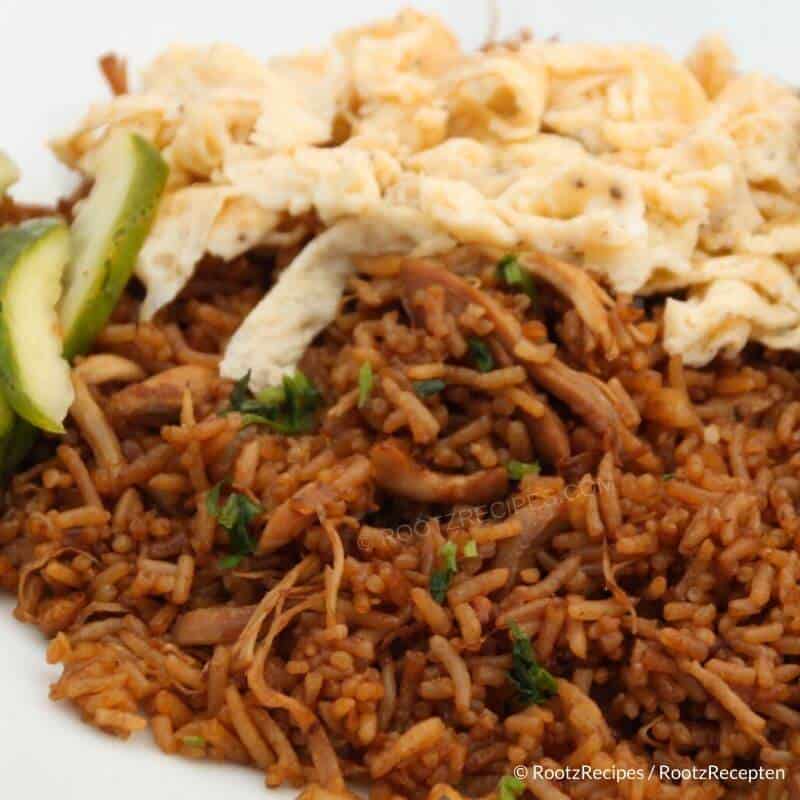
Overview of Suriname Cuisine
Suriname cuisine is a delightful blend of diverse cultural influences and the use of local ingredients. Situated on the northeastern coast of South America, Suriname is a melting pot of cultures, including Indigenous, African, Indian, Indonesian, Chinese, and Dutch. This multicultural heritage has significantly shaped the country’s culinary scene, resulting in a rich and flavorful cuisine that caters to a wide variety of tastes.
Diverse Cultural Influences
The diversity of Suriname’s population is reflected in its cuisine, which incorporates culinary traditions from various cultural groups. From the Indigenous tribes’ love for cassava and plantains to the African and Creole communities’ preference for fish and seafood, Suriname offers a diverse range of flavors and dishes. Additionally, the Indian and Indonesian influence can be seen in the widespread use of spices and traditional cooking techniques.
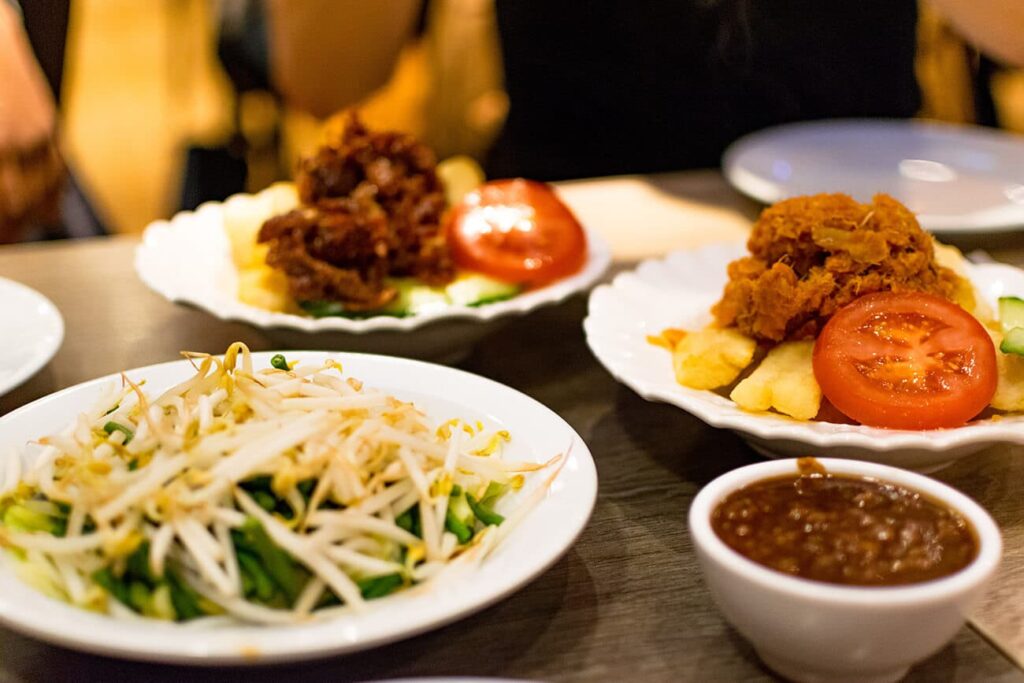
Importance of Local Ingredients
Surinamese cuisine places a strong emphasis on using locally sourced ingredients, which not only adds freshness to the dishes but also supports the local economy. The abundance of tropical fruits, vegetables, and herbs in the region provides a vibrant and aromatic palette for Surinamese chefs. Furthermore, staple ingredients like rice, cassava, plantains, and various protein sources form the foundation of many traditional dishes.
Herbs and Spices in Suriname Cuisine
Herbs and spices play a crucial role in Surinamese cuisine, adding depth and complexity to the flavors. Popular herbs used include cilantro, green onions, and parsley, which are often used as garnishes or incorporated into sauces and marinades. The diversity of Suriname’s spice blends reflects its cultural influences. Traditional spice blends like masala, five-spice, and adobo are commonly used in Surinamese cooking to enhance the flavors of dishes.
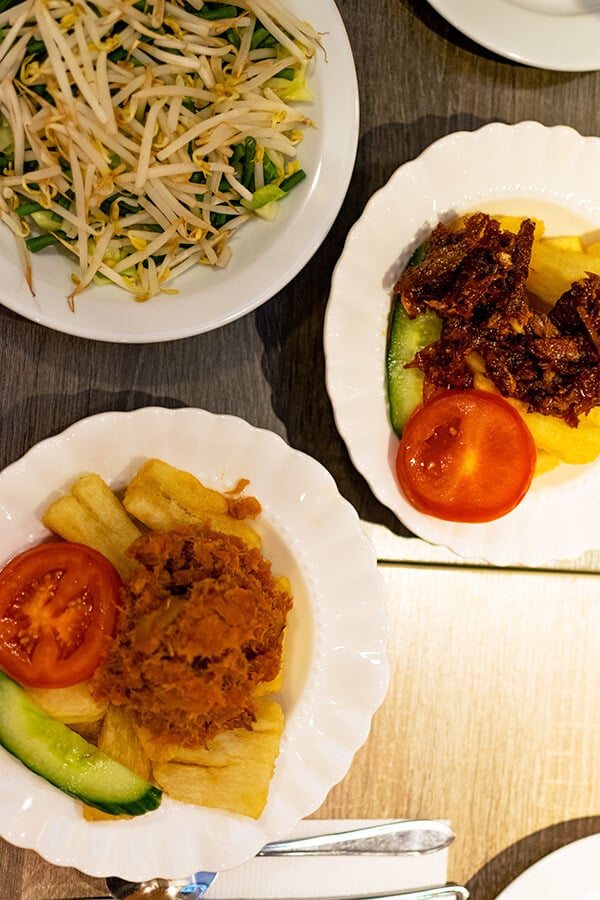
Proteins in Suriname Cuisine
Suriname’s proximity to the Atlantic Ocean and its vast network of inland rivers makes fish and seafood staples in the local diet. Freshwater fish like piranha and catfish are popular choices, often prepared in aromatic stews or grilled to perfection. Meat options such as chicken, beef, and pork are also enjoyed in Surinamese cuisine, prepared using various cooking techniques including grilling, stewing, and smoking. For those seeking vegetarian alternatives, Suriname offers an array of flavorful options such as tofu, tempeh, and a variety of legumes.
Staple Ingredients in Suriname Cuisine
Rice holds a significant role in Surinamese cuisine, often served alongside main dishes like curries and stews. It is cooked to perfection, resulting in a fluffy and fragrant accompaniment. Cassava, a root vegetable, and plantains are also staples in Surinamese cuisine. Cassava is used to make cassava bread, a popular carbohydrate source, while plantains are fried or boiled and served as a savory side dish.
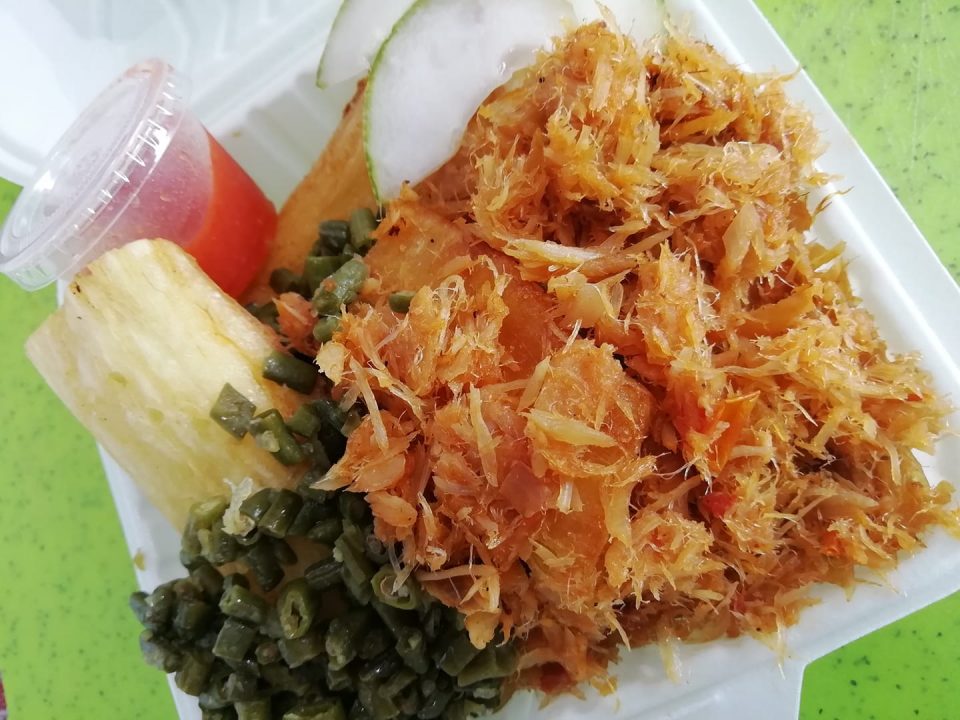
Traditional Surinamese Dishes
Saoto Soup is a flavorful and savory broth that features noodles, chicken, potatoes, and various toppings such as bean sprouts, fried onions, and boiled eggs. This dish reflects the Javanese influence in Surinamese cuisine. Another traditional dish is Pom, a baked chicken and root vegetable casserole marinated in a citrus-based sauce. The flavors of Pom reflect the Afro-Surinamese culinary traditions. Roti, an Indian-inspired flatbread, is also a beloved dish in Suriname, often accompanied by curried fillings.
Popular Surinamese Street Food
Suriname is renowned for its vibrant street food scene, offering a wide variety of snacks and quick bites. Bara is a popular street food made from fried dough, filled with savory combinations such as spiced potatoes, curried chickpeas, or shredded chicken. Teloh, an addictive snack, consists of deep-fried sweet potato slices seasoned with aromatic spices. Bakabana, a favorite among locals and tourists alike, is a fried plantain snack that is crispy on the outside and soft on the inside.
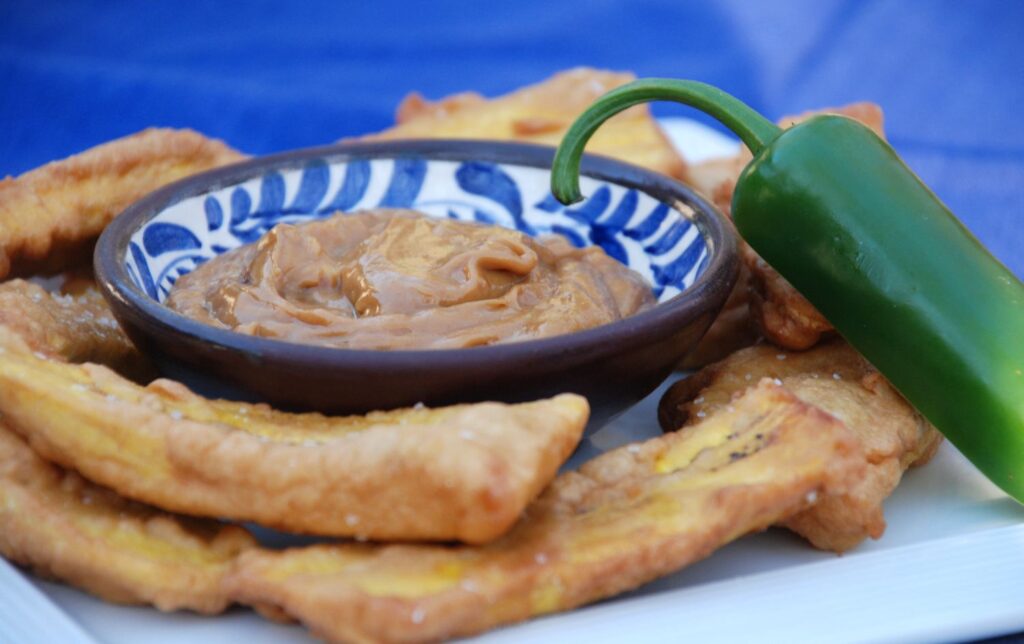
Fusion Influences in Suriname Cuisine
Surinamese cuisine owes its fusion influences to centuries of colonization and migration. Chinese influences can be seen in dishes like Chinese BBQ pork, soy sauce-based stir-fries, and the popular dish called Bami, which is a Surinamese interpretation of Chinese-style fried noodles. Javanese influences are evident in dishes like Nasi Goreng, a flavorful fried rice dish, and Sambal, a spicy chili-based condiment. Dutch influences are apparent in Suriname’s love for Dutch cheese, pastries, and various European cooking techniques.
Surinamese Desserts and Sweets
Finish off a delightful Surinamese meal with some delectable desserts and sweets. Bojo, a cassava-based cake with grated coconut and sweet spices, offers a unique combination of flavors and textures. Gadjak, a traditional Surinamese peanut brittle, is a favorite treat enjoyed by all. Goedangan, a mixed fruit salad that usually includes tropical fruits, adds a refreshing and fruity touch to the dessert course.
Traditional Beverages in Suriname
Suriname offers a variety of traditional beverages to quench your thirst. Pommerel, a refreshing fruit punch made from locally grown fruits like passion fruit, oranges, and lemons, is a popular choice. Awara-Shandy is a unique Surinamese beverage that combines beer with palm fruit juice, resulting in a sweet and refreshing drink that is enjoyed by many.
Food Rituals and Festivals in Suriname
Suriname celebrates a variety of food-related rituals and festivals throughout the year. Keti Koti, or Emancipation Day, is a significant celebration that marks the abolition of slavery in Suriname. This day is commemorated with traditional dishes such as saoto soup, pom, and various Afro-Surinamese delicacies. Holi Pagwa, a Hindu festival celebrated with vibrant colors, also involves food rituals. Different types of sweets and snacks are shared among family and friends during this festive occasion.
Suriname Cuisine in the Diaspora
Surinamese cuisine has gained popularity beyond the borders of Suriname. In many countries, including the Netherlands and the United States, Surinamese restaurants have emerged to cater to the growing demand for authentic Surinamese flavors. These restaurants offer a taste of Surinamese street food, traditional dishes, and fusion creations that reflect the multicultural heritage of the cuisine. Additionally, Surinamese cuisine has adapted and fused with local flavors in foreign countries, creating unique and exciting culinary experiences.
Health Benefits of Suriname Cuisine
Surinamese cuisine offers numerous health benefits. The use of fresh and locally sourced ingredients ensures that meals are packed with essential nutrients. Fresh fruits and vegetables provide a rich source of vitamins and minerals, while proteins from fish, meat, and legumes contribute to a balanced diet. Incorporating traditional cooking techniques such as grilling, stewing, and steaming helps retain the nutritional value of the ingredients, making Surinamese cuisine a healthy choice.
Sustainability and Ethical Concerns
Suriname’s commitment to sustainability and ethical concerns can be seen in the emphasis placed on locally sourced ingredients. By supporting local farmers and businesses, Suriname aims to reduce its carbon footprint and promote a sustainable food system. Efforts are also being made to reduce food waste by utilizing every part of the ingredients and embracing traditional preservation techniques. These sustainable practices ensure that Suriname’s culinary heritage is preserved for future generations to enjoy.
Conclusion
In conclusion, Suriname cuisine offers a tantalizing journey filled with diverse cultural influences and a commitment to using local ingredients. From the flavorful herbs and spices to the wide range of proteins and staple ingredients, every aspect of Surinamese cuisine reflects the vibrant cultural mosaic of the country. Whether you’re indulging in traditional dishes or exploring Suriname’s street food scene, the cuisine is sure to captivate your taste buds and leave a lasting impression. So, dive into the world of Suriname cuisine and savor the unique flavors that have been shaped by centuries of culinary fusion and cultural exchange.